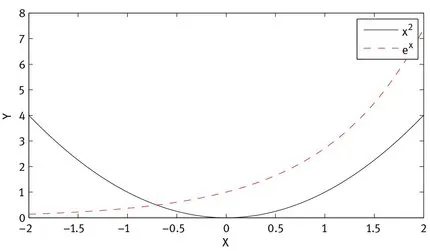
Scientific Computing
Timo Heister, Leo G. Rebholz
- 149 pagine
- English
- ePUB (disponibile sull'app)
- Disponibile su iOS e Android
Scientific Computing
Timo Heister, Leo G. Rebholz
Informazioni sul libro
Scientific Computing for Scientists and Engineers is designed to teach undergraduate students relevant numerical methods and required fundamentals in scientific computing.
Most problems in science and engineering require the solution of mathematical problems, most of which can only be done on a computer. Accurately approximating those problems requires solving differential equations and linear systems with millions of unknowns, and smart algorithms can be used on computers to reduce calculation times from years to minutes or even seconds. This book explains: How can we approximate these important mathematical processes? How accurate are our approximations? How efficient are our approximations?
Scientific Computing for Scientists and Engineers covers:
- An introduction to a wide range of numerical methods for linear systems, eigenvalue problems, differential equations, numerical integration, and nonlinear problems;
- Scientific computing fundamentals like floating point representation of numbers and convergence;
- Analysis of accuracy and efficiency;
- Simple programming examples in MATLAB to illustrate the algorithms and to solve real life problems;
- Exercises to reinforce all topics.
Domande frequenti
Informazioni
1 Introduction
1.1 Why study numerical methods?
- – How do we best approximate these important mathematical processes/operations?
- – How accurate are our approximations?
- – How efficient are our approximations?
- – Introduce students to some basic numerical methods for using mathematical methods on the computer.
- – Analyze these methods for accuracy and efficiency.
- – Implement these methods and use them to solve problems.
1.2 Terminology
- – A numerical method is any mathematical technique used to approximate a solution to a mathematical problem. Common examples of numerical methods you may already know include Newton’s method for root-finding and Gaussian elimination for solving systems of linear equations.
- – An analytical solution is a closed form expression for unknown variables in terms of the known variables. For example, suppose we want to solve the problem
 for a given (known) a, b, and c. The quadratic formula tells us the solutions are
for a given (known) a, b, and c. The quadratic formula tells us the solutions are Each of these solutions is an analytical solution to the problem.
Each of these solutions is an analytical solution to the problem. - – A numerical solution is a number that approximates a solution to a mathematical problem in one particular instance.



- – The function linspace (a, b, n) creates a vector of n equally spaced points from a to b.
- – In the definition of y1, we use a period in front of the power symbol. This denotes a ‘vector operation’. ...